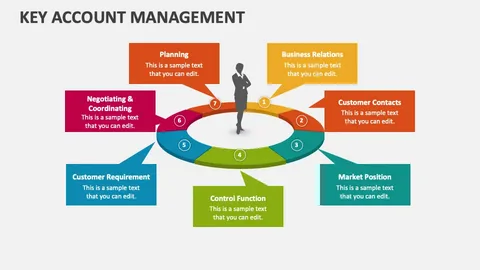Key account management (KAM) has always been about nurturing the company’s most valuable relationships—the clients that drive growth, stability, and reputation. But the landscape has changed. Today’s customers expect more than regular check-ins and quarterly reports; they want personalized solutions, fast responses, and proof that their business truly matters. Managing these expectations manually can be overwhelming, especially when teams handle dozens of major accounts simultaneously.
This is where technology steps in—not as a replacement for relationships, but as a tool to strengthen them. The rise of digital solutions has made it possible to track client interactions, anticipate needs, and identify risks long before they escalate. With the right systems in place, account managers can focus more on strategy and less on administrative juggling.
Breaking Down Silos Between Teams
One of the biggest challenges in key account management is the lack of communication between departments. Sales, marketing, and customer service often work in separate systems, leaving account managers piecing together fragments of information just to understand what’s going on with a single client. This lack of alignment can lead to missed opportunities, duplicated efforts, and, ultimately, frustrated clients.
Technology helps bridge that gap. Centralized platforms and shared dashboards create a single source of truth where everyone—from sales reps to executives—can see the same data. When an account manager logs in, they can instantly view client history, contract details, project status, and even previous support tickets. That level of visibility helps teams move as one unit, ensuring that every client interaction feels coordinated and informed.
Turning Data Overload into Meaningful Insight
It’s no secret that most companies are drowning in data. Between CRM systems, email threads, and customer surveys, account managers have more information than ever before—but that doesn’t always mean they know what to do with it. Too often, valuable insights get buried under spreadsheets or lost in scattered reports.
Modern key account management tools make it easier to translate that data into action. Instead of sifting through endless metrics, these tools organize and visualize key trends—like revenue growth, engagement levels, or risk factors—so managers can make quick, confident decisions. For example, if a key client’s engagement rate starts to drop, the system can flag it early, giving the team time to step in before the relationship weakens. In this way, data becomes less of a burden and more of a strategic advantage.
Managing Client Expectations in Real Time
Another common challenge in KAM is the speed of modern business. Clients expect immediate responses, real-time updates, and proactive service. Relying on traditional communication channels or scattered spreadsheets can make it nearly impossible to stay ahead of those expectations.
Technology enables real-time collaboration, both internally and with clients. Many platforms now include shared portals where account managers and clients can review project updates, track deliverables, and exchange feedback instantly. This level of transparency not only builds trust but also reduces misunderstandings. When clients feel seen and informed, they’re far more likely to remain loyal—even during challenging times.
Additionally, automation tools can handle repetitive tasks like follow-up reminders, progress tracking, and report generation. This frees up account managers to focus on strategic conversations—the ones that deepen relationships and uncover new growth opportunities.
Maintaining Consistency Across Complex Accounts
As companies grow, so does the complexity of their client relationships. One manager might oversee several large accounts with unique goals, teams, and timelines. Without a consistent process in place, it’s easy for things to fall through the cracks—especially when turnover or organizational changes occur.
Technology brings structure to that complexity. Account management software allows teams to set up standardized workflows, define milestones, and track progress across multiple accounts in a consistent format. It ensures that no matter who’s managing the relationship, clients receive the same level of care and communication. Moreover, having a centralized digital record means that new account managers can step in without losing context or history, reducing disruption for both the team and the client.
The Human Advantage Behind the Tech
At its core, key account management is still about people—the trust built between a company and its most valued clients. Technology doesn’t replace that connection; it enhances it. By removing the guesswork, streamlining communication, and turning scattered data into meaningful insights, digital tools help account managers focus on what truly matters: building relationships that last.
In today’s competitive environment, the difference between keeping and losing a key account often comes down to how quickly and effectively a business can adapt. With the right technology in place, account managers can do more than just react—they can anticipate, strategize, and lead with confidence. And that’s what transforms a good client relationship into a lasting partnership.


